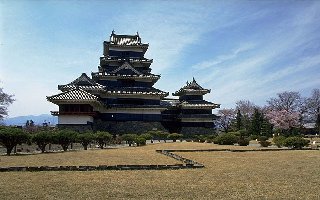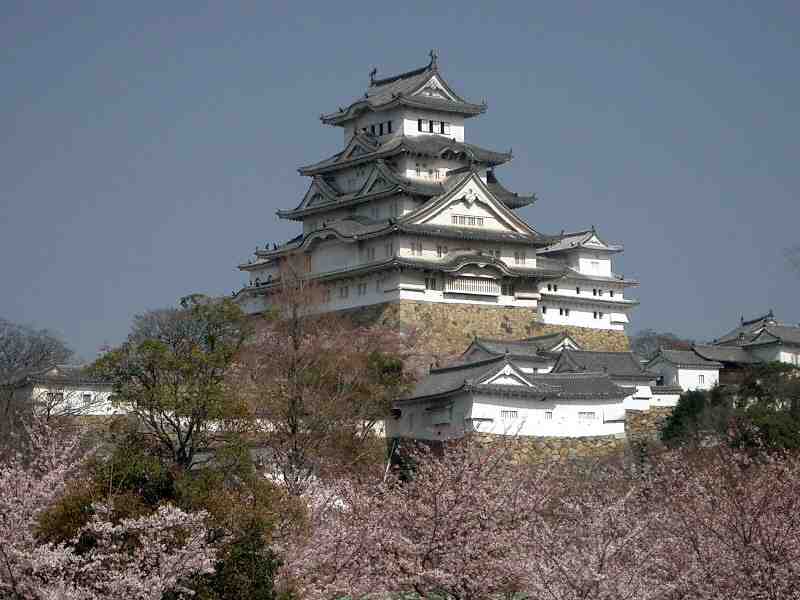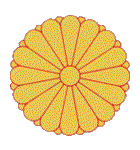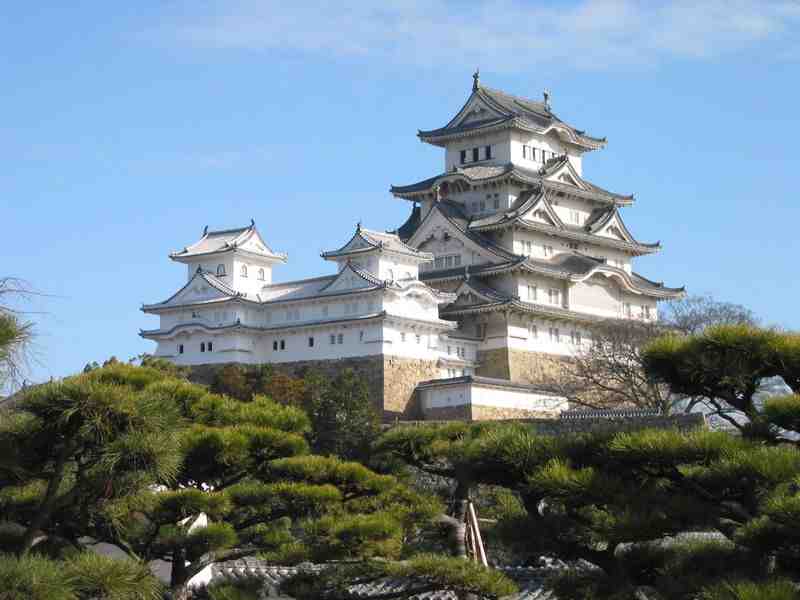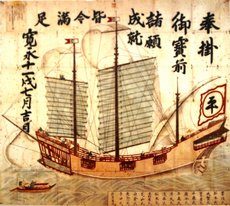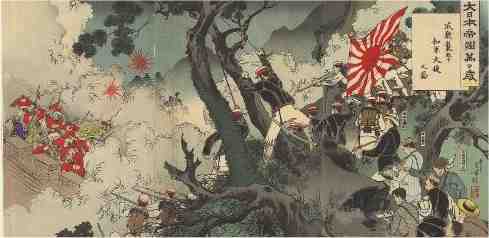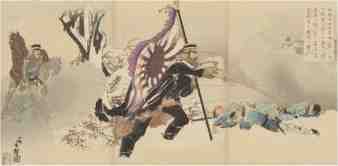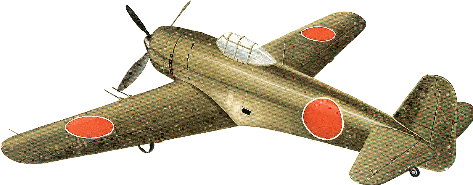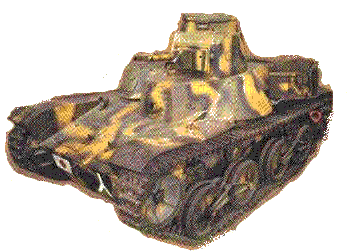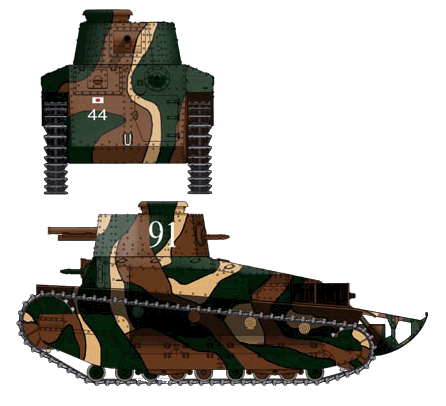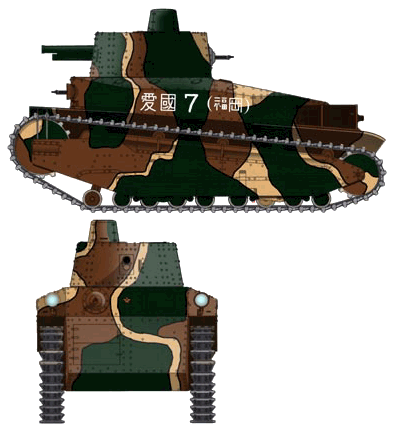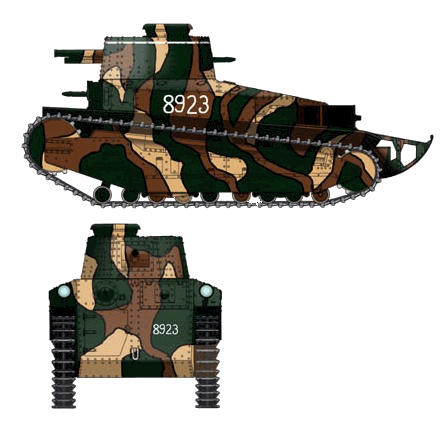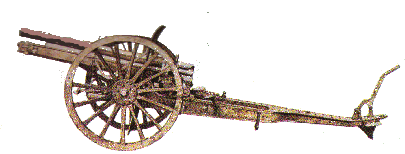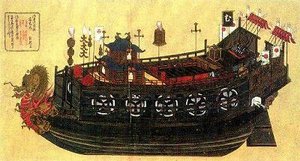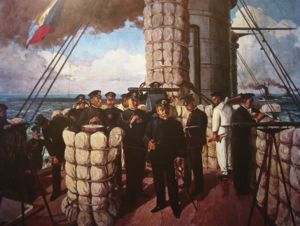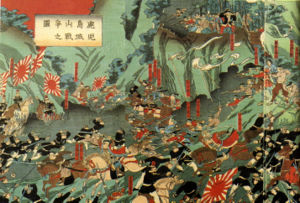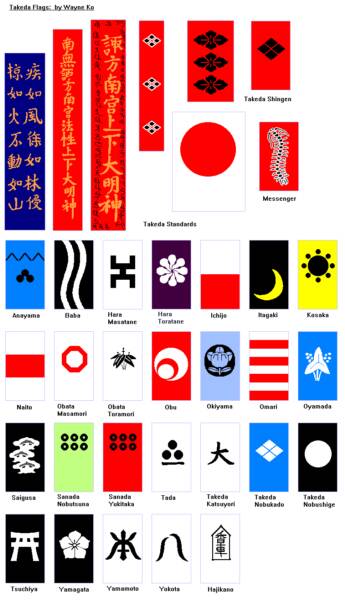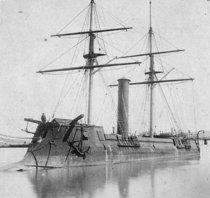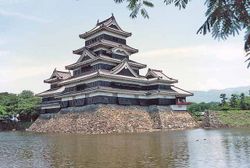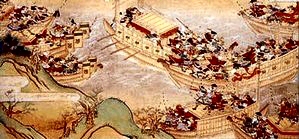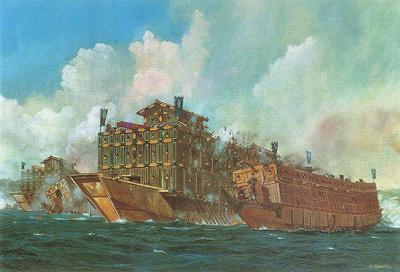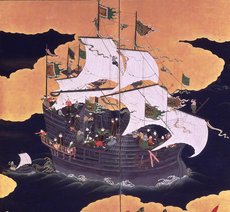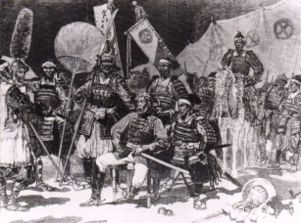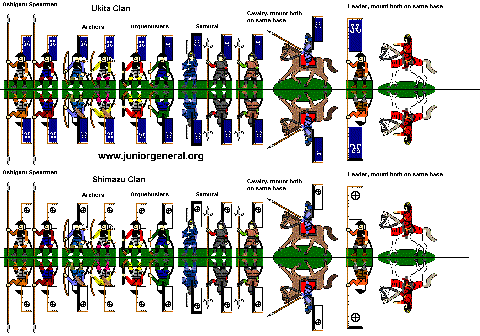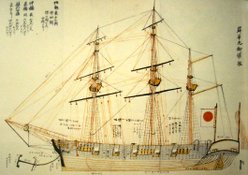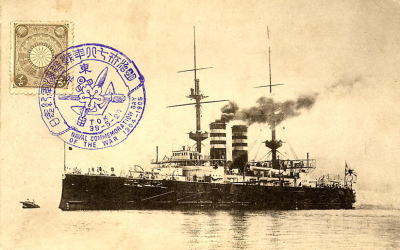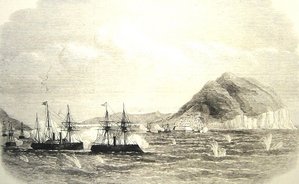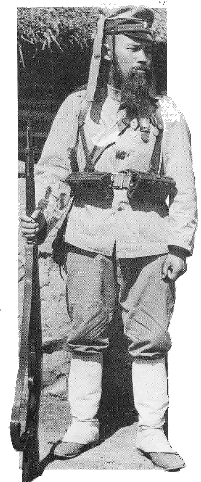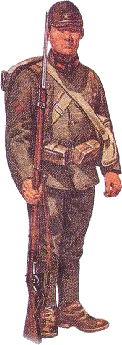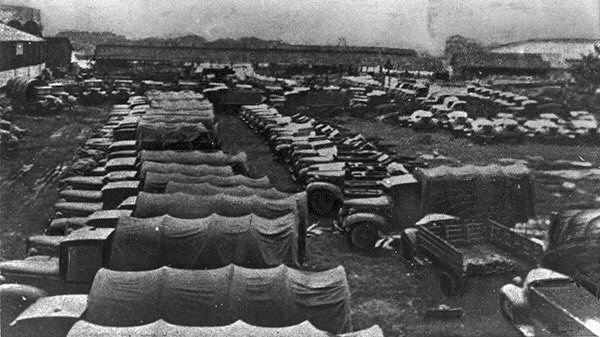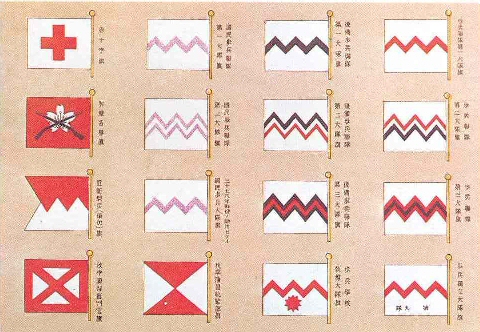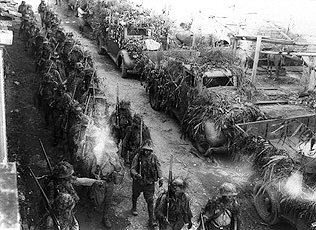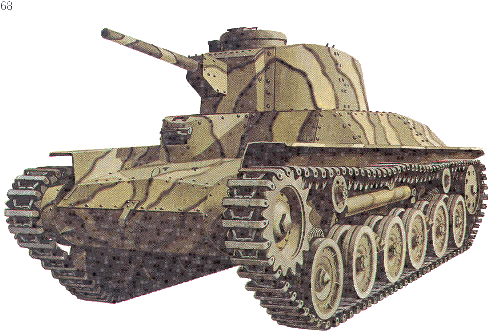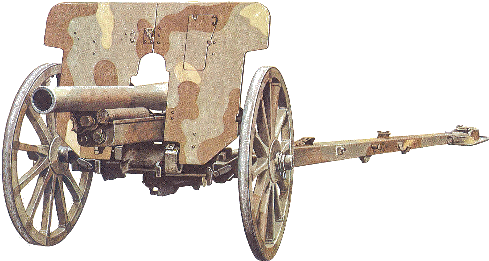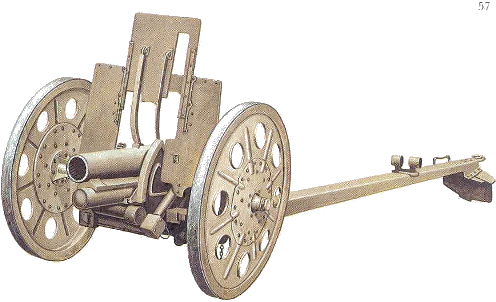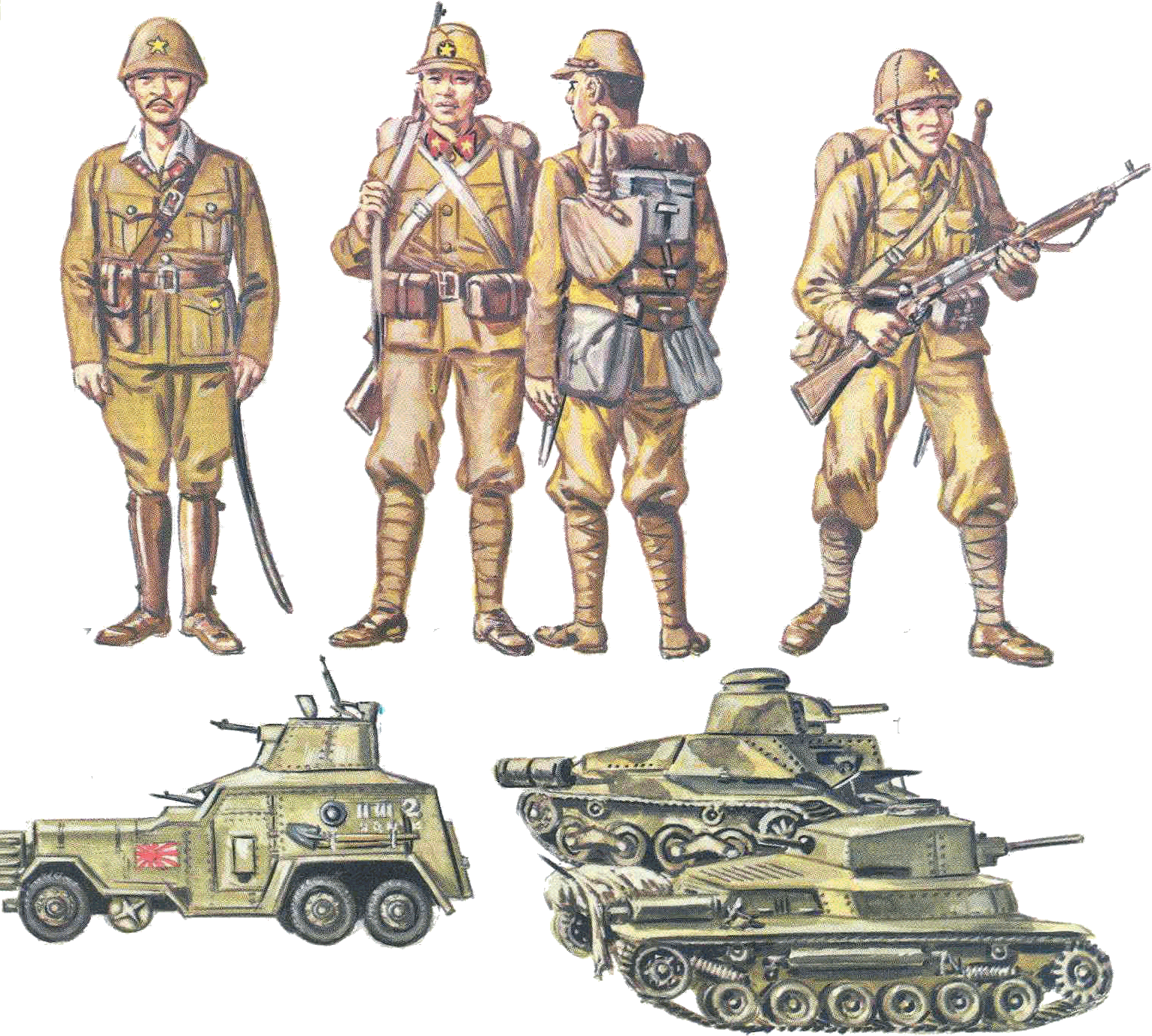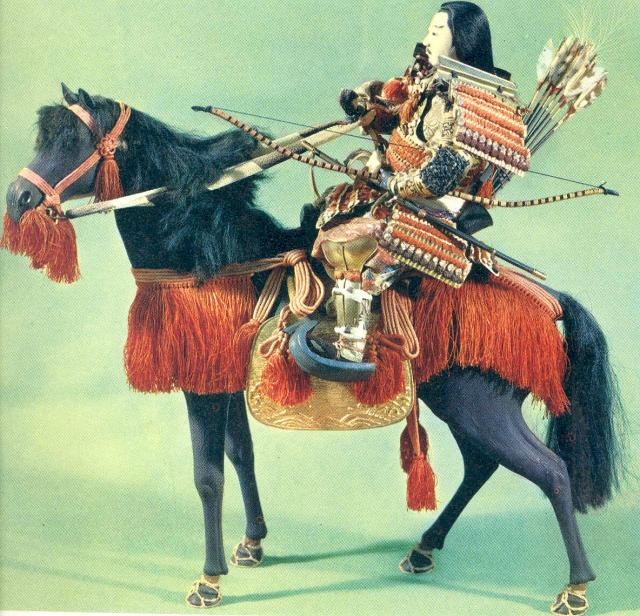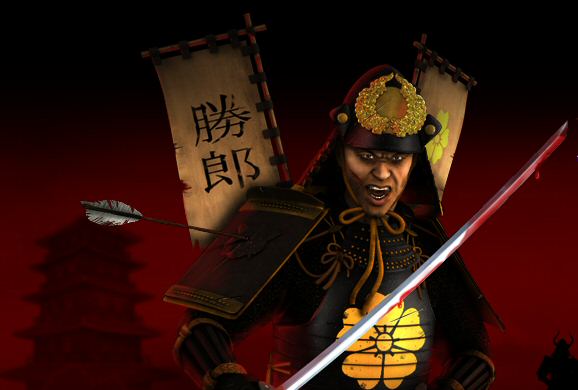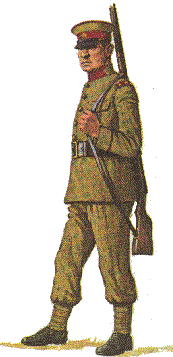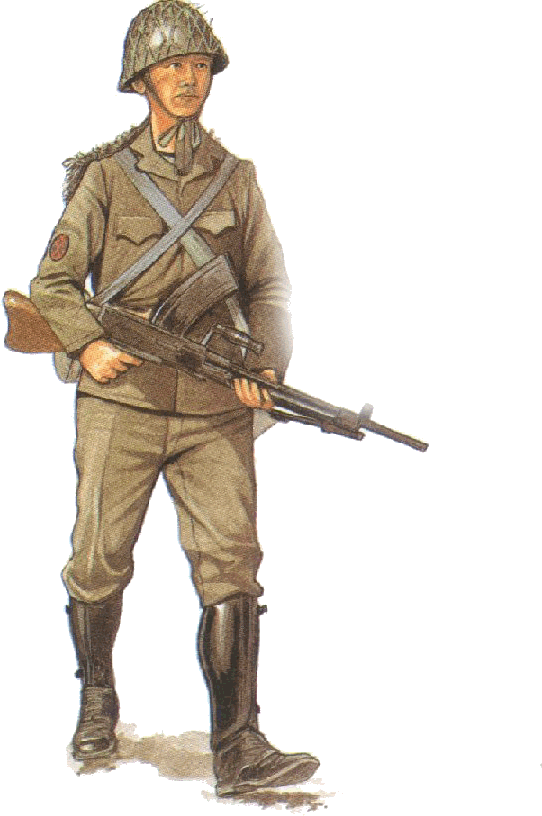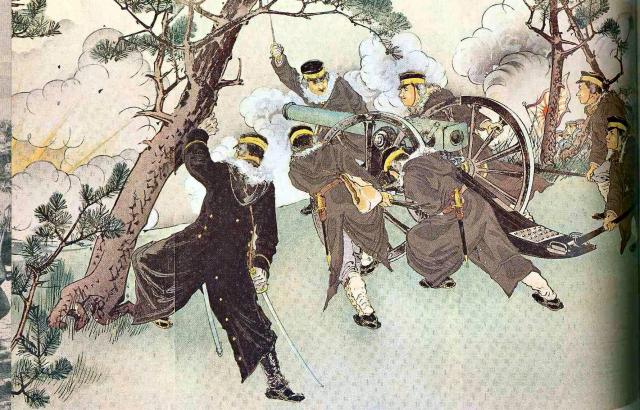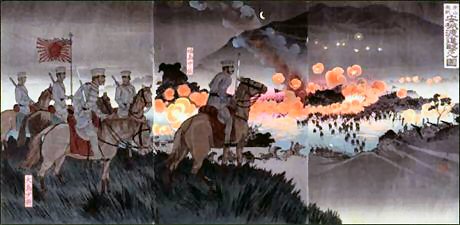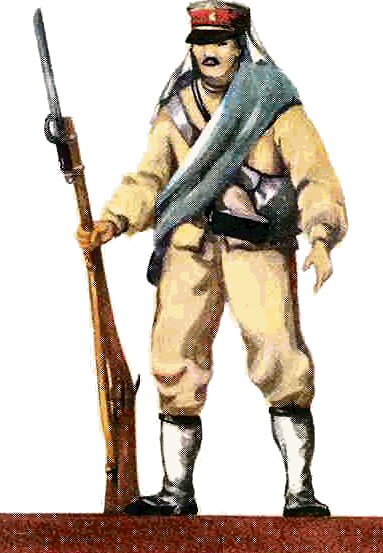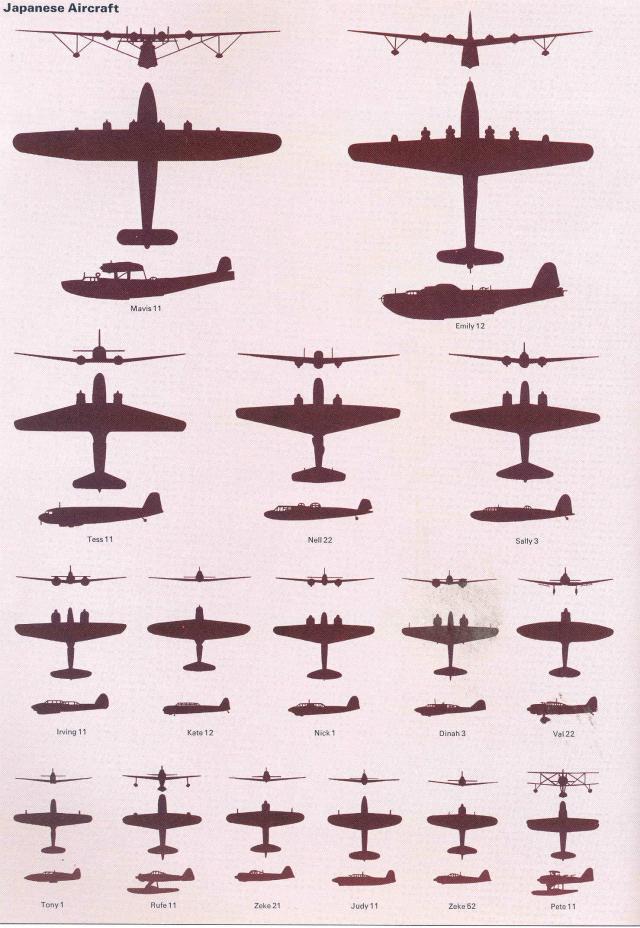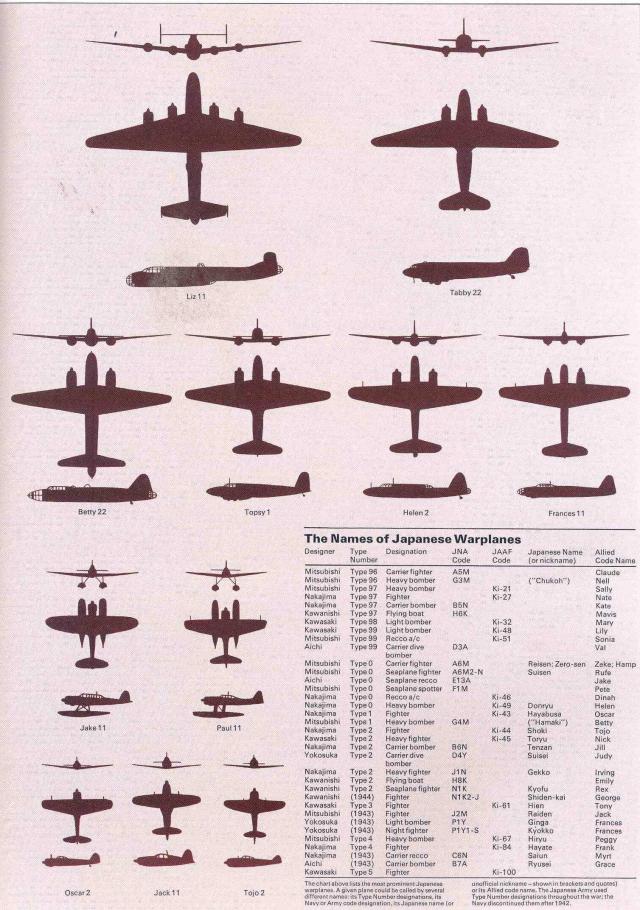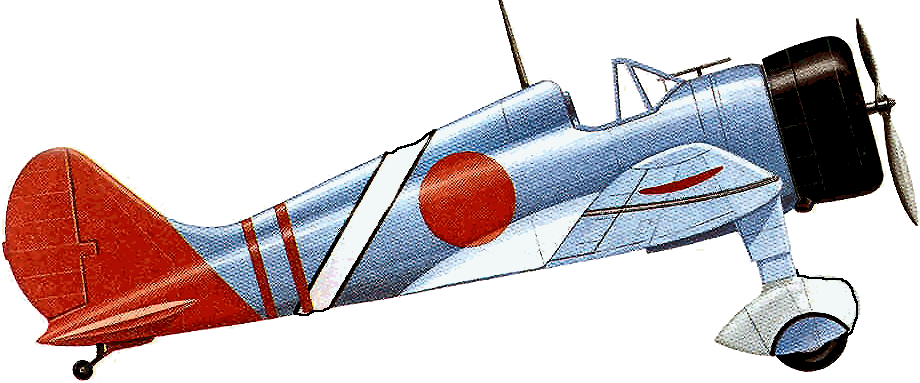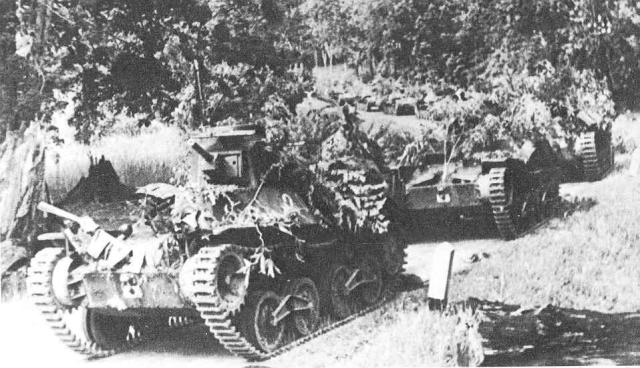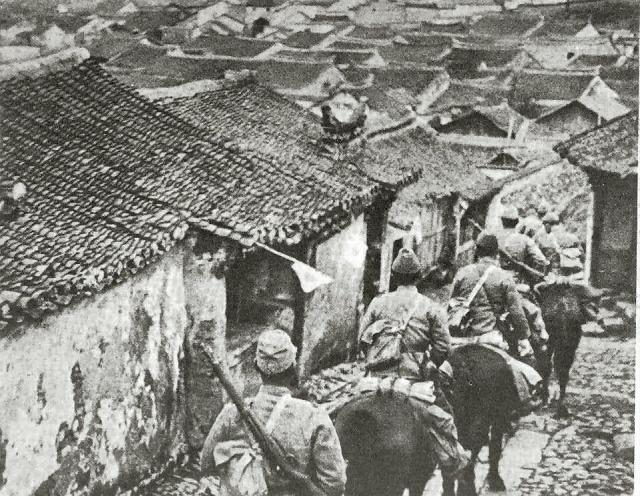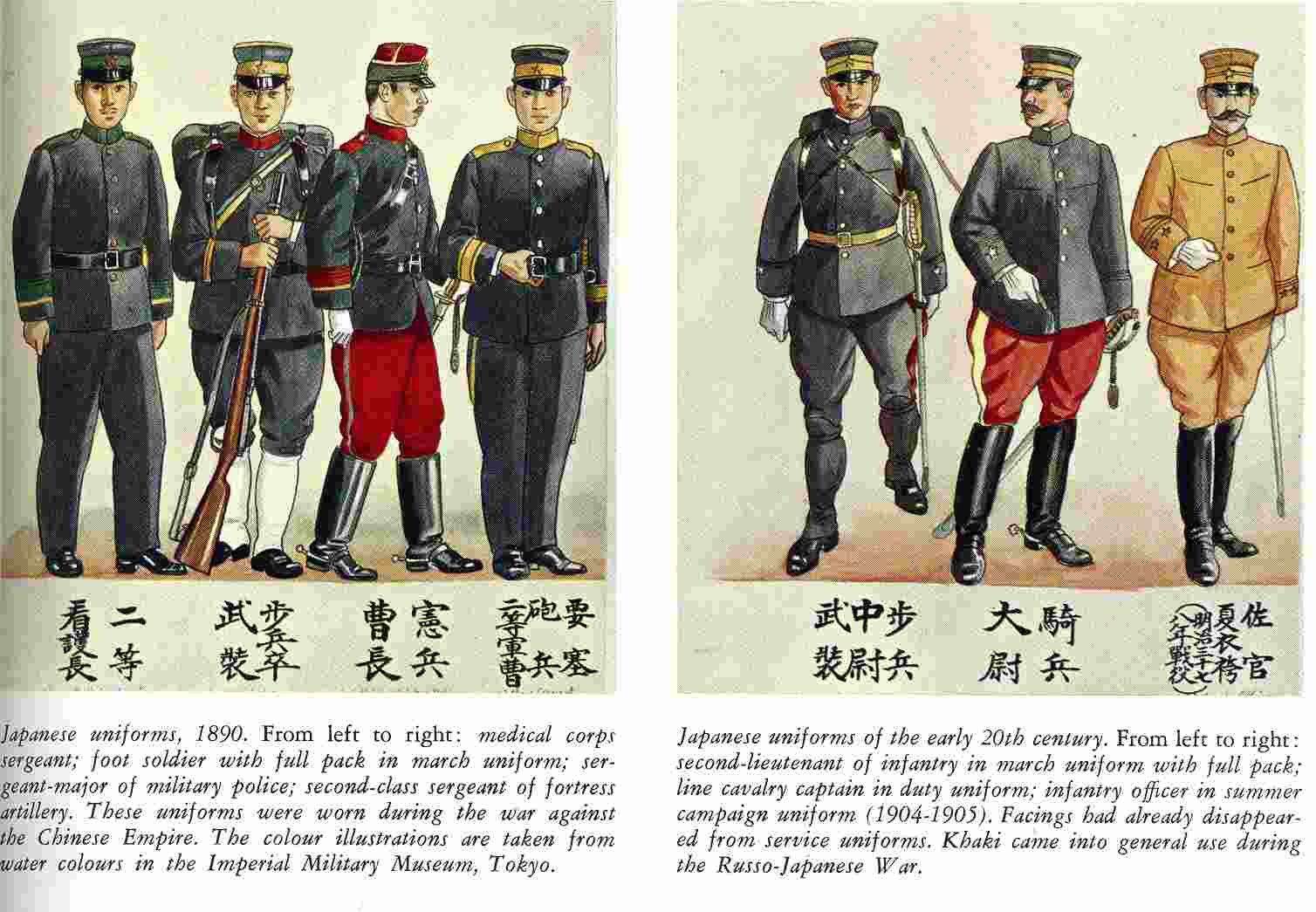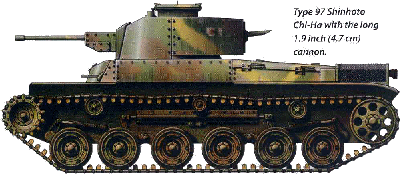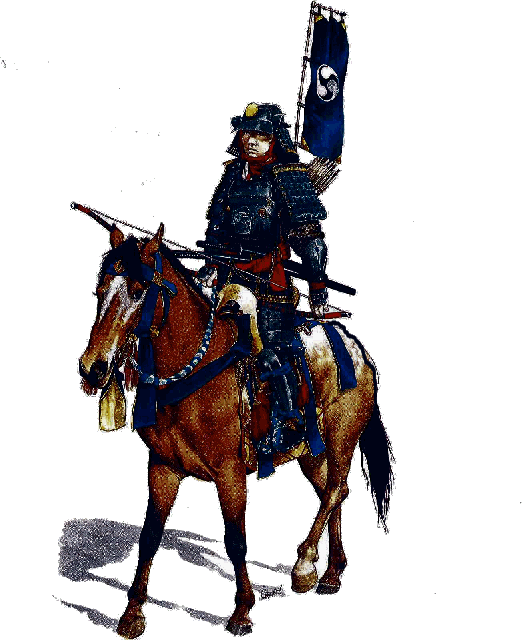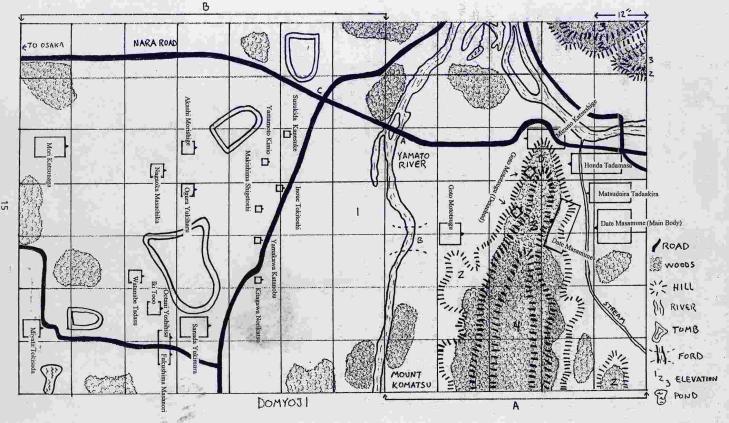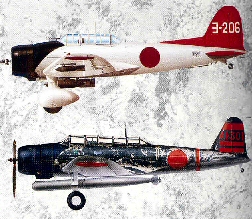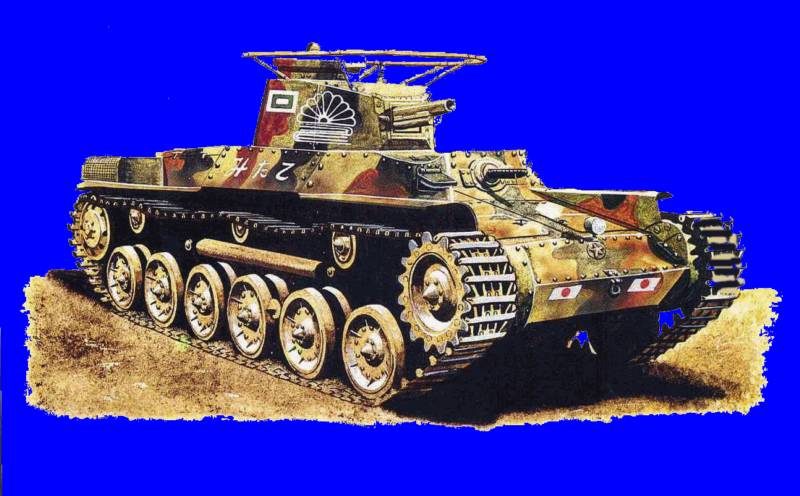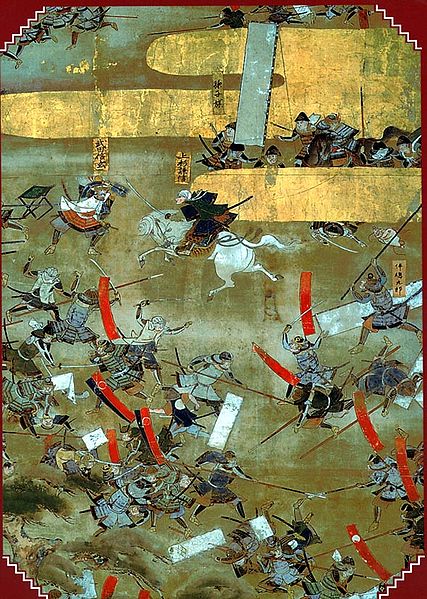Total Entries: 11
More battles in Japan Wednesday, 12/6/06, 10:00 AM
Battle of Komatsu 1062. After twelve days of continual sword combat, Imperial troops under Yoriyoshi defeat rebels led by Sadatoki. 1600 Battle of Segikahara. Tokugawa Tyeyasa, Japanese Shogun routed 130,000 rebels under Mitsunori. 1900s the Satsuma Rebellion is probably the event upon which the Hollywood film "The Last Samurai" was based.
The Japanese Civil War 1866-68 Wednesday, 12/6/06, 9:58 AM
In 1853, Commodore Matthew Perry of the United States Navy led a squadron of heavily armed warships to the Tokugawa Shogun's capital, forcing an end to Japanese isolation and inciting fifteen years of bloody turmoil across the island nation. Shogun Tokugawa Yoshinobu, with a fleet of twelve warships at his disposal, was the most powerful man in Edo and head of the Tokugawa army. However, in 1866 the Shogun's forces suffered a series of humiliating defeats at the hands of the revolutionary Choshu Army. In October 1867, the Shogun announced his abdication and the restoration of power to the Emperor. But diehard opposition within the Tokugawa camp led to civil war breaking out anew near Kyoto in January 1868. Although the Imperial forces, led by Saigo Kichinosuke of Satsuma, were greatly outnumbered, they routed the army of the former Shogun in just three days, upon which Edo castle was peacefully surrendered.
Turtle ships & the naval battles of the Seven Year War 1592-8 ¿ the Imjin War Wednesday, 12/6/06, 9:54 AM
Once Japan was unified in a series of wars, General Hideyoshi decided to conquer Korea. At first the Japanese were successful, but the invasion eventually bogged down. Korean resistance, Chinese intervention, and the famous turtle ships all conspired to defeat the Japanese. ¿General Lee Sun- shin had the first sea battle near Geoje-do (island) against Japanese forces, destroying almost every Japanese battleship. It was the first Korean victory since the war began. He also later won consecutive victories at Sacheon, Dangpo, and Danghangpo, culminating in the famous victory at Hansan Island. The war began in 1592 and ended in 1598 with the withdrawal of Japanese troops
From: Tsushima straits etc.
The Mongol Invasion defeated by Kamikaze ¿ the Divine Winds of Japan Wednesday, 12/6/06, 9:52 AM
The ¿divine winds¿ were thought sent by the gods to protect Japan. In 1268 Mongol envoys arrive in Japan with a message from the Mongol ruler, Kublai Khan. The Japanese at this time have two centres of power. The apparent ruler is the emperor, living in Kyoto. The real ruler is the military Regent Bakufu in Kamakura. The emperor is terrified. He has heard tales from the Sung about Mongol atrocities and their military skill. But the Bakufu is insulted and defiant. The envoys are sent home without a reply, snubbing Kublai Khan¿s offer. The Mongols build a fleet in their Korean vassal state, the Kingdom of Koryu. In November 1274, 900 ships set sail with 25,000 Mongol soldiers and 15,000 Koreans. Japan has no deep sea ships to speak of, so the fleet heads toward Japan unhindered. They first attack the island of Tsushima. Next, the island of Iki falls. On November 19th or 20th the Mongols land at Imazu in Hakata Bay, Kyushu. The Bakufu has a force of 6,000-10,000 Samurai waiting at Hakata Bay, but they are unfamiliar with the tactics of the Mongols and are hit hard by the Mongol artillery. The fighting is fierce all day, but the Mongol forces make steady progress. Japanese reinforcements are sent to Hakata Bay. By the time help arrives, the surviving defenders have been pushed back to Hakata, the modern-day city of Fukuoka. The Mongols feared a counter-attack when the darkness made their artillery useless, and took to the safety of their ships, burning a shrine to cover their retreat. A hurricane then tore through the area. 200 ships are sunk and 13,000 soldiers never return to Koryu. The first invasion is over. In 1279, the Sung Dynasty in southern China falls to the Mongols. The defeated Sung army and navy become part of a new invasion force. In Koryu, the force consists of 900 ships with 30,000 Mongol soldiers and 10,000 Koreans. In southern China, 3,500 ships are prepared, carrying 100,000 Chinese soldiers. The Bakufu has not been idle, however. While spies kept watch on the mainland, a wall is built around Hakata Bay. The wall is 13 miles long and about 8 feet high. It is vertical, facing the bay, but the inland side is angled to allow horses to climb it. Defences are also built elsewhere, and soldiers are stationed along the western coast and the inland sea. The fleet from China is delayed. The fleet at Koryu decides not to wait for them, and sets sail on 22 May, 1281. Tsushima soon falls. Then Iki is overrun. The northern fleet is supposed to rendezvous here with the southern fleet, but instead, it heads straight for Hakata Bay. The Japanese are waiting for them. Almost 100,000 soldiers are in Kyushu, and a reserve force of 20,000 more is in southern Honshu. A small diversionary force sails north towards Honshu, but on the 23rd of June, the main body lands on Shiga Spit to the north of Hakata Bay and at the north end of the wall. After several days of fighting, only one unit manages to get a beachhead. While the invasion is stopped on land, the Japanese strike back at sea using their large collection of coastal fishing boats. These are loaded with soldiers, and hit-and-run tactics are made on the Mongol fleet. Night and day, individual boats are boarded, the crew killed, and the ship burned. These tactics are so effective that the Mongols begin to lash their ships together and lay planks between the ships to help repel attacks. For a week, attempts are made to land, but they are all fiercely thrown back. Finally, the fleet retreats to Iki. The soldiers have been forced to stay on the cramped ships since they could not land. The Mongols have also been renowned for their lack of hygiene, and to make it worse, they have brought their precious horses across the sea with them. In these unsanitary conditions, 3,000 men die of fever.
Two Japanese battles of the C16 Wednesday, 12/6/06, 9:48 AM
Toyotomi Hideyoshi, in the service of Lord Nobunaga, marched from Bitchu towards Kyoto and defeated Akechi Mitsuhide at the battle of Yamakazi 1582. the following year, 1583, he defeated Shibata Katsuie at the battle of Shizugatake.
Some battles in Japan Wednesday, 12/6/06, 9:48 AM
Mizushima, west of Okayama in Bizen Yamazahi, 70kms NW of Osaka. Kawanakajima, south of Nagano in Honshu Ichinotani, west of Osaka Toba- Fushimi, south of Kyoto Seta, at the south end of Lake Biwa Shizugatake, north end of Lake Biwa Sekigahara, west of the Kiso River Okehazama, on the coast SE of Nagoya Ishibashiyama, south of Hakone on the Izu peninsula. 1185 Dannoura ¿ naval battle in the ¿Inland Sea¿ strait between the islands of Kyushu and Honshu. The Taira clan, including a reigning Emperor, were sent to the bottom by the Miramoto led by Yoshinate, who then assumed the Shogunate at their base in the Kanto plain.
Samurai & Warrior Monks Wednesday, 12/6/06, 9:47 AM
Known as Bushi or Samurai, a military elite dominated Japanese politics, economics, and social policies between the twelfth and nineteenth centuries. These warriors, who first appear in historical records of the tenth century, rose to power initially through their martial prowess¿in particular, they were expert in archery, swordsmanship, and horseback riding. The demands of the battlefield inspired these men to value the virtues of bravery and loyalty and to be keenly aware of the fragility of life. Yet, mastery of the arts of war was by no means sufficient. To achieve and maintain their wealth and position, the samurai also needed political, financial, and cultural acumen. In contrast with the brutality of their profession, many samurai became highly cultivated individuals. Some were devoted patrons of Buddhism, especially of the Zen and Jodo schools. Several were known as accomplished poets, and others as talented calligraphers. During the Edo period (1615¿1868), the cult of the warrior, bushido, became formalized and an idealized code of behavior, focusing on fidelity to one's lord and honor, developed. The samurai of this period continued the seemingly paradoxical relationship between the cultivation of bu and bun¿the arts of war and of culture¿that characterized Japan's great warriors. Also to be noted in Japan during the Edo period (1615¿1868, was the existence of fanatical bands of warrior monks ¿ those based near the capital gave the Emperors and Shoguns a lot of trouble.
The Battle of Nagashino June 28th 1575 Wednesday, 12/6/06, 9:43 AM
In 1543, a Chinese ship carrying Portuguese was wrecked on Tanegashima island. Local seignior, Tanegashima Tokitaka bought 2 arquebuses from the Portuguese and asked a blacksmith to imitate them. Japan being in a civil war period (Sengoku jidai), this new weapon spread quickly all over Japan. The Battle of Nagashino took place on June 28th 1575. The forces of Takeda Katsuyori clashed with the allied forces of Oda Nobunaga and Tokugawa Ieyasu on the Shitaragahara plain near Nagashino Castle, located in central Japan. Takeda Katsuyori was the son of the late great general Takeda Shingen and was ready to try and make a name for himself. Tokugawa Ieyasu owned the lands to the south, along the main avenue of approach through central Japan to Kyoto, the Imperial capital. The Takeda and Tokugawa had fought many times before. Allied to Ieyasu was Oda Nobunaga, the nominal hegemon of central Japan. Nobunaga controlled the heartland of Japan around Kyoto and was an innovator with firearms and tactics in Japanese warfare. Oda Nobunaga eliminated Takeda's elite cavalry troops by placing obstacles and by aligning more than 1000 matchlock arquebuses against them.
Battles in Nippon Monday, 11/20/06, 11:17 AM
check out also the more detailed list of Samurai period battles on this site.
From: Japan
Web Site: TWT
Samurai battles AZ Friday, 6/10/05, 7:52 AM
see also the very excellent SAMURAI ARCHIVE site
Web Site: The War Tourist
The Samurai Archive Saturday, 5/21/05, 1:58 PM
From: Japan
Web Site: The Samurai Archive
(Members can delete entries.)




